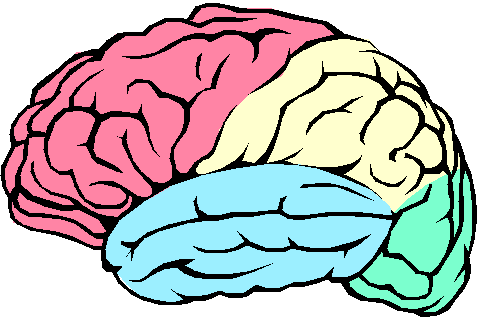In order to
understand what homelessness is, it is important to recognize what
it isn't.
This activity will help to clarify this for students and teachers.
 To
do this you
will be using a thinking tool called an affinity
diagram. An
affinity
diagram is
a graphic organizer that helps you gather a lot of ideas and
organize the ideas into natural groupings.
To
do this you
will be using a thinking tool called an affinity
diagram. An
affinity
diagram is
a graphic organizer that helps you gather a lot of ideas and
organize the ideas into natural groupings.  The
affinity
diagram
taps into both sides of the brain- the right side of the brain will
generate the ideas and the left side of the brain will work to
analyze and organize the ideas.
The
affinity
diagram
taps into both sides of the brain- the right side of the brain will
generate the ideas and the left side of the brain will work to
analyze and organize the ideas.
STEPS FOR
CREATING AN AFFINITY DIAGRAM
- For this
activity, you will use a large piece of butcher paper, several
pieces of chart paper taped together or even a blank wall.
- Divide
students into groups of three or four. Give each group a pack of
sticky notes and marker pens for everyone. Each group should
have a work space.

- On the
word "Go", student will write words that come to
their mind when they think of "home". They should
write the words on as many sticky notes as they can. There
should be no
discussion...
just thinking and writing. Students should keep their attention
on their own work. Give the groups about five minutes to do
this.
- Once the
brainstorming step has finished, have group members reveal their
sticky note words and then as a group quietly organize the the
sticky notes into natural relationships at their work table
(example: people, things, food etc). Duplicate words should be attached to each other.
Words can be moved until everyone is agrees with the category it
ends up in. A category can have any number of sticky notes under
it (even just one). Continue until the group is pleased with the
categories that result from this activity (give sufficient time
for this to happen). There should be a title card at the top of
each category.

 See Our Students At Work:
See Our Students At Work:
- Join
together as a class. Ask the groups to share their categories.
Write each suggested category boldly on the large piece of
class chart paper. Have the groups place their sticky notes
under these categories.
- You now
have a class affinity diagram on the topic of "Home".
- Have
various students come up to share the ideas that are under each
category with the class as a whole.
 Learn
More about Affinity Diagrams
Learn
More about Affinity Diagrams
PART TWO:
In the
previous assignment you thought about "home". Now
you will think about those who don't
have
a home and what home looks like to them. Students will create a
large visual mind map communicating what it means to be homeless.
Think about the categories from your affinity diagram and
considering using some of those in your mind map. You will need
to include at least 5 categories on your mind map. All the categories
will lead off a center shape entitled "homeless: without a
home".
Draw your mind map
on a large piece of chart paper, including pictures and
graphics that will enhance the information you are communicating.
Each category should have 5-6 pieces of meaningful information. Here
are some examples of this mind map:
Here
are three examples of other mind maps:
 http://www.bchs.net/dobbs/go/romerutkin.jpg
http://www.bchs.net/dobbs/go/romerutkin.jpg
 http://www.bchs.net/dobbs/go-spider-burris2.jpg
http://www.bchs.net/dobbs/go-spider-burris2.jpg
CREATED
BY:
BRENDA
DYCK
MASTER'S
ACADEMY AND COLLEGE